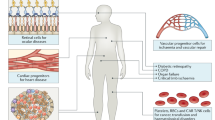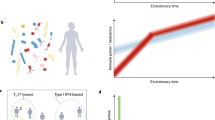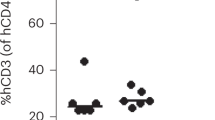Abstract
THE transplantation antigens present a striking example of genetic polymorphism. Medawar1 has stated that “Although there are no factual grounds for supposing that antigenic diversity is anything but an unfortunate consequence of constitutional differences between individuals of a species, yet one is under some obligation to rack one's brains for evidence of any good it might conceivably do. Only thus can antigenic polymorphism be made genetically respectable”. Because during gestation the foetus is a homograft to the mother and would therefore seem liable to rejection, this variability would at first sight appear to be a distinct disadvantage to a viviparous animal. The hypotheses put forward to account for the survival of the foetal homograft have recently been reviewed by Billingham2. Most of them have not withstood experimental verification, but there is good reason to believe that one, which assumes the presence of a physical barrier between mother and foetus, is correct3,4. Antigenic differences between mother and offspring are not, however, without effect; the consequences of blood-group incompatibility, for example, are well known. Recently, it has been shown that other antigenic differences may affect the growth of the placenta5, and also the size of the foetus itself6,7. If one inbred strain of mice is mated with another, the hybrid foetus is significantly larger just before birth than a pure bred foetus of either parental strain. This increase in size does not arise from classical heterosis alone, as the effect can be enhanced by making the mother immune to the tissues of her partner or diminished by making her tolerant of them6. In these experiments it seems probable that the foetuses which are unlike their mothers, and therefore larger at birth, have a greater chance of survival. These observations suggest a system for maintaining balanced polymorphism; it can be represented by the following model.
This is a preview of subscription content, access via your institution
Access options
Subscribe to this journal
Receive 51 print issues and online access
$199.00 per year
only $3.90 per issue
Buy this article
- Purchase on Springer Link
- Instant access to full article PDF
Prices may be subject to local taxes which are calculated during checkout
Similar content being viewed by others
References
Medawar, P. B., Symp. Soc. Exp. Biol., 7, 320 (1953).
Billingham, R. E., New Engl. J. Med., 270, 667, 720 (1964).
Kirby, D. R. S., Billington, W. D., Bradbury, S., and Goldstein, D. J., Nature, 204, 548 (1964).
Kirby, D. R. S., Billington, W. D., and James, D. A., Transplantation (in the press).
Billington, W. D., Nature, 202, 317 (1964).
James, D. A., Nature, 205, 613 (1965).
McLaren, A., J. Reprod. Fertil., 9, 79 (1965).
Fisher, R. A., The Genetical Theory of Natural Selection (Oxford, 1930).
Hull, P., Proc. U.S. Nat. Acad. Sci., 51, 461 (1964).
Hull, P., Genetics, 50, 563 (1964).
Snell, G. D., J. Nat. Cancer Inst., 21, 843 (1958).
Author information
Authors and Affiliations
Rights and permissions
About this article
Cite this article
CLARKE, B., KIRBY, D. Maintenance of Histocompatibility Polymorphisms. Nature 211, 999–1000 (1966). https://doi.org/10.1038/211999a0
Issue Date:
DOI: https://doi.org/10.1038/211999a0
This article is cited by
-
Diversity of MHC IIB genes and parasitism in hybrids of evolutionarily divergent cyprinoid species indicate heterosis advantage
Scientific Reports (2021)
-
Characterization of bovine MHC DRB3 diversity in global cattle breeds, with a focus on cattle in Myanmar
BMC Genetics (2020)
-
Pathogen-associated selection on innate immunity genes (TLR4, TLR7) in a neotropical rodent in landscapes differing in anthropogenic disturbance
Heredity (2020)
-
Adult survival in migratory caribou is negatively associated with MHC functional diversity
Heredity (2020)
-
Immunological MHC supertypes and allelic expression: how low is the functional MHC diversity in free-ranging Namibian cheetahs?
Conservation Genetics (2019)
Comments
By submitting a comment you agree to abide by our Terms and Community Guidelines. If you find something abusive or that does not comply with our terms or guidelines please flag it as inappropriate.



